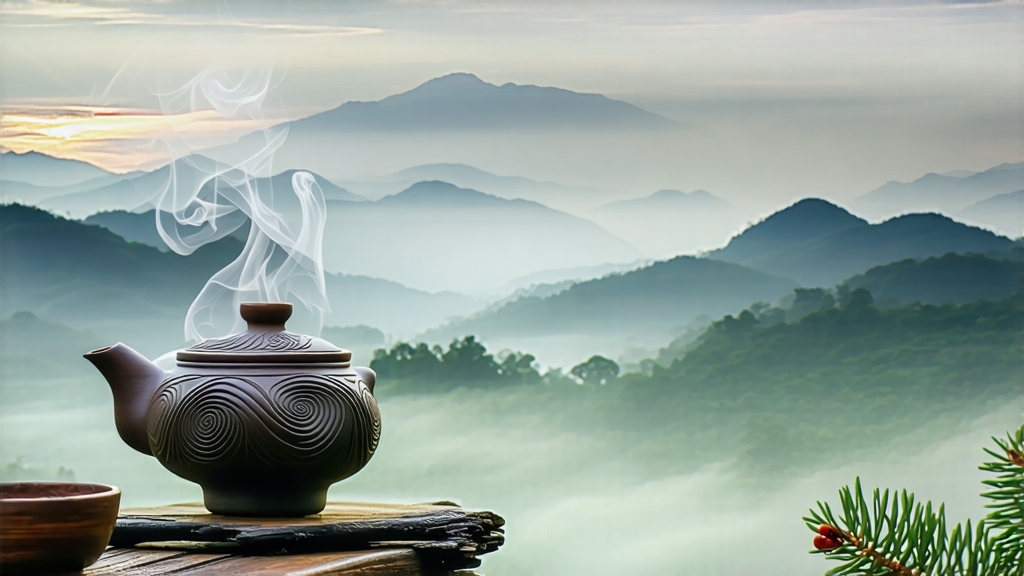
Tucked away in the humid, karst-pocked mountains of southern China, Liupao tea has spent four centuries quietly perfecting the art of darkness. To most outsiders “dark tea” means the brick-shaped, yak-butter companion of Tibetan caravans—Pu-erh. Yet connoisseurs inside China rank Liupao alongside, and sometimes above, its Yunnan cousin for the depth of its camphor-betel perfume and the velvet smoothness it acquires with age. This article invites the global tea lover to discover why a single cup of well-stored Liupao can taste like incense, rainforest soil, and molasses all at once.
-
From War Horses to Tea Horses
The story begins in the late Ming dynasty when the imperial court exchanged Guangxi tea for Central Asian war horses. Pack animals needed compact, slow-fermenting cargo that would not spoil on the six-month trek. The people of Wuzhou prefecture responded by inventing a tea that literally improved the longer it bounced on mule-back. They called it “Liupao”—“six castles,” after the six stockaded villages that once guarded the trade route. By the Qing, Liupao had become a Tribute Tea, shipped up the Pearl River to Guangzhou and thence to the Manchu nobility who prized its ability to settle the stomach after opulent banquets. -
One Leaf, Three Styles
Although all Liupao is dark tea, the market now recognizes three stylistic families:- Sanhe Liupao: the traditional loose-leaf grade, named after the three historic trading houses that standardized quality in the 18th century.
- Basket Liupao: leaves steamed and packed into 30–50 kg rattan baskets lined with bamboo leaves; the bamboo imparts a green, sappy note that slowly melds with the tea’s own fermentation.
- Compressed Liupao: modern discs, bricks, or mini-toucha shaped for convenient aging and retail display; compression slows oxygen flow, yielding a deeper, more resinous profile after five years.
-
Terroir: Where Humidity Writes Flavor
The minuscule production zone—barely 700 km² straddling the Tropic of Cancer—combines red lateritic soil, 1,600 mm annual rainfall, and diurnal mountain fogs. The local large-leaf cultivar, Camellia sinensis var. assamica cv. Guangxi Daye, carries two genetic quirks: higher polyphenol oxidase activity and a unique ratio of farnesene to geraniol. These traits translate into the tea’s signature betel-nut aroma once microbes take over. -
Crafting Darkness: A Six-Act Play
Step 1: Pluck—one bud plus third or fourth leaf, when the internodes are already lignifying, giving the finished tea its sturdy spine.
Step 2: Solar Wilt—leaves are spread on bamboo racks for three hours, softening cells without the grassy volatiles associated with green tea.
Step 3: Indoor Pile—an 8-hour rest at 28 °C, encouraging endogenous enzymes to loosen leaf structure.
Step 4: Kill-Green—flash-firing at 200 °C for seven minutes arrests oxidation but preserves microbial spores clinging to the leaf surface.
Step 5: Rolling—twice through a 55 cm diameter roller; the heavy pressure cracks the midrib, creating channels for later microbial colonization.
Step 6: Wet-Piling—unique to dark teas. Leaves are sprayed to 35 % moisture, heaped 70 cm high, and covered with wet jute. Every three days the pile is turned and re-sprayed; thermophilic bacteria (Bacillus subtilis, Streptomyces spp.) raise the core to 55 °C, while yeasts and molds on the cooler periphery generate fruity esters. After 25–30 days the leaf turns chestnut-brown and emits the unmistakable scent of camphor and dried longan. -
The Pine Smoke Whisper
Unlike Pu-erh, Liupao is briefly smoked over pine embers for 30–40 minutes. Master smokers use 30-year-old trunks that have lost most resin, ensuring a cool, aromatic smoke that adds a layer of incense without masking microbial complexity. Aficionados often describe the resulting note as “temple courtyard